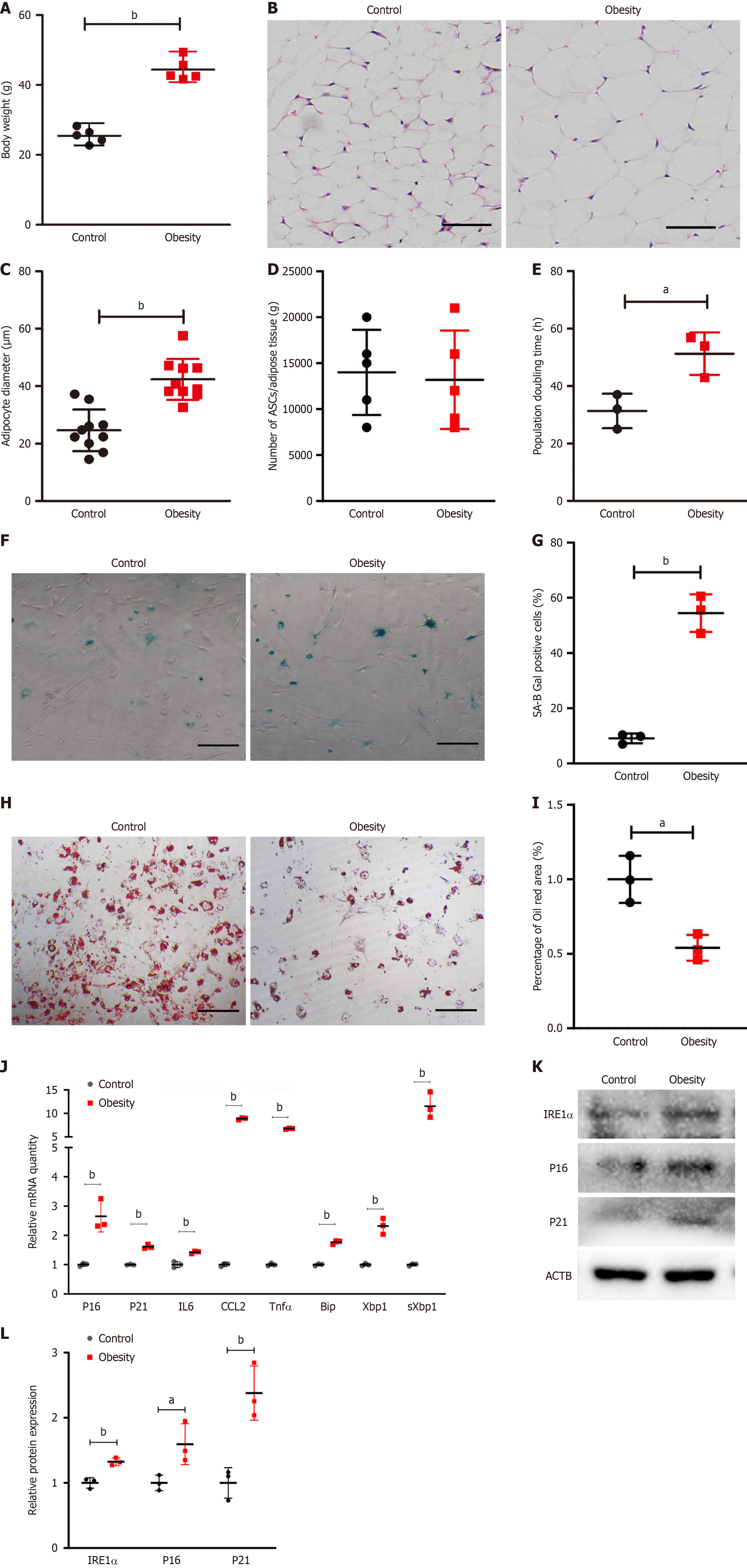Copyright
©The Author(s) 2025.
World J Stem Cells. Jun 26, 2025; 17(6): 104367
Published online Jun 26, 2025. doi: 10.4252/wjsc.v17.i6.104367
Published online Jun 26, 2025. doi: 10.4252/wjsc.v17.i6.104367
Figure 1 Senescence phenotype and endoplasmic reticulum stress increase in adipose-derived mesenchymal stem cells of a hypertrophic obesity mouse model.
A: Body weight of hypertrophic obesity model mice and control mice (n = 5); B: Hematoxylin and eosin staining of subcutaneous adipose tissue sections of control and hypertrophic obesity mice, bar = 50 μm; C: Subcutaneous adipocyte diameter in tissue sections analyzed by ImageJ (n = 10); D: Number of adipose-derived mesenchymal stem cells (ASCs) per gram adipose tissue in control and hypertrophic obesity mice (n = 5); E: Population doubling time of control and hypertrophic obesity ASCs (n = 3); F: SA-B-Gal staining of control and hypertrophic obesity ASCs, bar = 100 μm; G: Percentage of SA-B-Gal staining positive cells analyzed by ImageJ software (n = 3); H: Oil Red O staining of adipogenic-induced control and hypertrophic obesity ASCs, bar = 100 μm; I: Percentage of positive Oil Red O stained area to cell number (n = 3); J: Quantitative polymerase chain reaction analysis of the relative mRNA expression of senescent markers (p16 and p21), senescence-associated secretory phenotype-related genes (interleukin 6 [IL6], C-C motif ligand 2 [CCL2], and tumor necrosis factor alpha [Tnfa]) and endoplasmic reticulum stress-related genes (binding immunoglobulin protein [Bip], X-box binding protein 1 [Xbp1] and spliced Xbp1 [sXbp1]) in ASCs; K: Western blot of senescent proteins p16, p21 and endoplasmic reticulum stress-related protein inositol-requiring enzyme-1 alpha (IRE1a); L: Relative quantitative analysis of p16, p21, and IRE1a relative to β-actin (ACTB) for Western blot by ImageJ software (n = 3). aP < 0.05; bP < 0.01.
- Citation: Fang J. Reduced NRF2/Mfn2 activity promotes endoplasmic reticulum stress and senescence in adipose-derived mesenchymal stem cells in hypertrophic obese mice. World J Stem Cells 2025; 17(6): 104367
- URL: https://www.wjgnet.com/1948-0210/full/v17/i6/104367.htm
- DOI: https://dx.doi.org/10.4252/wjsc.v17.i6.104367









